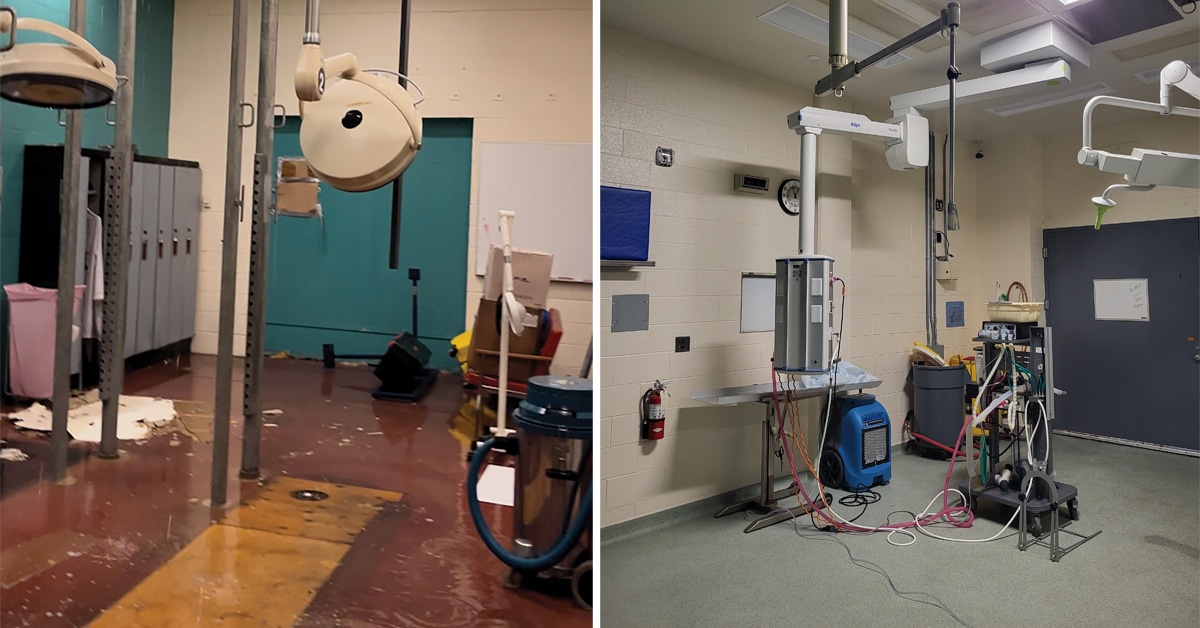Canada’s first standing CT scanner, and only the second in North America, has been installed at King Animal Hospital in King, Ontario. This groundbreaking technology is set to transform the diagnosis and treatment of equine patients in Ontario. While veterinarians are excited about this new resource, you might be wondering why this development is so significant. To understand that, let’s explore the benefits of a standing CT and how it can improve outcomes for horses.
1. Detailed 3D Imaging: A Leap Beyond X-Rays and Ultrasounds
Before the advent of CT technology, veterinarians relied primarily on X-rays and ultrasounds to assess equine patients. While these tools are useful, they have significant limitations.
“The other imaging modalities may lack the detailed three-dimensional view that CT provides for more precise diagnostics,” explained Michelle Rodrigues MRT(MR), Bsc, MA, who is the Lead Diagnostic Imaging Technologist at King Animal Hospital. “Radiographs provide flat, two-dimensional pictures that can obscure subtle fractures or joint abnormalities. Ultrasounds, although effective for soft tissue evaluation, struggle to penetrate deep within bones.”
The CT scans the body on multiple planes (frontal, sagittal, and transverse), producing high-resolution 3D images. This allows veterinarians to examine intricate structures in far greater detail. Whether assessing a horse’s limbs or its head and sinuses, CT enables vets to “crisscross” through anatomy, revealing details that would otherwise be missed.
“Ultrasounds are beneficial for looking at soft tissues, but CT does cross-sectional imaging which gives additional information,” said Dr. Orlaith Cleary, MVB, DACVS-LA, one of the four equine surgeons at King Animal Hospital. “The CT images give us the extra detail that we need in very complicated anatomical structures, such as the sinuses, the dentition and the distal limbs, where we can cross-sectionally view the limb and look at areas that we can’t see as easily on radiographic or ultrasonographic studies.”
2. Weight-Bearing Imaging: Essential for Distal Limb Assessment
One of the most significant applications of the standing CT is in evaluating the distal limbs of horses. The ability to assess a limb in a weight-bearing stance is beneficial when diagnosing conditions related to joint health and bone structure. Conditions such as proximal suspensory insertional issues or joint facet abnormalities can be difficult to detect using standard diagnostic tools. However, standing CT provides cross-sectional images of these areas, offering a much clearer view of the bones and joint interface.
The tool is particularly helpful with evaluating the joints of racehorses while they bear weight, which can reveal subtle changes that might not be visible when the horse is lying down. This weight-bearing stance provides insights into the joint and bone structures, aiding in the diagnosis of conditions such as arthritis or other degenerative joint diseases. Additionally, when it comes to fractures or hairline cracks, standing CT scans can reveal far more detail than radiographs especially in a cross sectional view. This level of precision is invaluable, not only in diagnosis, but also in planning for treatment.
“The benefits of a standing CT is exactly that it is a standing procedure and it’s weight bearing,” explained Dr. Cleary. “We can see the horse in its weight-bearing state, which can give us a lot of information about the joint and bone facets, especially the joints, and especially in racehorses.”
3. Applications in Sinus and Dental Issues
Apart from orthopedic uses, standing CT is also extremely beneficial for evaluating head and dental issues in horses. The sinuses, dentition, and cranial nerves are areas where subtle abnormalities can lead to significant discomfort and performance issues in horses. Standing CT allows for a comprehensive evaluation of these regions without the need for general anesthesia.

The CT scans the body on multiple planes (frontal, sagittal, and transverse), producing high-resolution 3D images.
“The CT can really help with differentiating various sinus changes that are overlapping on radiographs,” noted Dr. Cleary. “Then when you do cross sectional imaging, it can highlight an area that you had a suspicion of when you couldn’t put your finger quite on it. So, if it was an intra sinus mass that was very discreet, a CT will pick that up, whereas it could potentially be missed on a radiograph. If it’s a small area of fluid collection in a sinus you could miss that on a radiograph, and it would be picked up on a CT. If it’s a very subtle dental abnormality that could be missed on a radiograph, you could pick it up on CT.”
For instance, in cases of chronic nasal discharge or performance-limiting dental problems, standing CT can detect masses, infections, or abnormalities in the dental roots. By providing clear, three-dimensional images, the scan helps veterinarians identify the root cause of these issues, leading to more effective treatments.
4. Precision in Treatment
One of the greatest benefits of standing CT is its role in helping to identify the best course of treatment.
The high-resolution images allow vets to accurately assess conditions that require surgical intervention. In the case of fractures, for instance, a CT scan can help trace the exact path of a fracture line through the bone. This information is crucial when planning surgeries, such as the placement of screws or other fixation devices.
For elective surgeries, standing CT ensures that the surgeon can plan with confidence, knowing exactly what they will encounter during the procedure. Moreover, in emergency situations — such as when a fracture is rapidly progressing — a CT scan provides a clear map of the damage, allowing the veterinary team to act quickly and effectively.
“CT scans are often used to aid surgical planning, but we can use them to plan non-surgical treatments too,” explained Dr. Cleary. “If a horse has a small fracture or lesion, we can monitor it over time with repeated scans, ensuring that our treatment plan is effective and adjusting as needed. The scans give us precise information about how the injury is healing, which helps us avoid surgery in some cases and make more informed decisions about the horse’s care.”
5. Standing Procedure: Eliminating the Need for General Anesthesia
During the standing CT, horses are lightly sedated and walked into the room where they are scanned, eliminating the need for general anesthesia where the horse is under general anesthesia and lying down. This is particularly valuable in equine medicine as horses, unlike smaller animals, present unique challenges when undergoing anesthesia with risk of complications during the induction and recovery phases. By avoiding general anesthesia, the standing CT ensures a safer, more streamlined process that reduces risks to the animal.
6. Reduced Recovery Time and Improved Patient Outcomes
The benefits of standing CT go beyond diagnosis and surgical planning; they extend to the recovery process as well. By allowing vets to get a more accurate picture of a horse’s condition, standing CT ensures that the most effective treatment is implemented from the start. Whether it’s surgery, rehabilitation, or a change in the horse’s exercise routine, the detailed information gained from a CT scan allows for more targeted and effective treatments.
Additionally, because standing CT doesn’t require general anesthesia, the horse’s recovery time after the procedure is significantly reduced. In many cases, the animal can return to its normal routine almost immediately after the scan, which is especially important for performance horses that need to maintain a regular training schedule.
A Game-Changer for Equine Veterinary Medicine
The installation of Canada’s first standing CT at King Animal Hospital marks a significant advancement in veterinary medicine, particularly for equine care. The scans taken while horses are weight-bearing eliminates the need for general anesthesia, and opens new doors in diagnosing and treating lameness, fractures, dental issues, and more. The 3D images it produces provide unparalleled insights into the horse’s anatomy, making it easier to plan surgeries and tailor treatment plans. Ultimately, standing CT improves both the safety of diagnostic procedures and the accuracy of diagnoses, leading to better outcomes and a higher standard of care for horses.
The Latest









